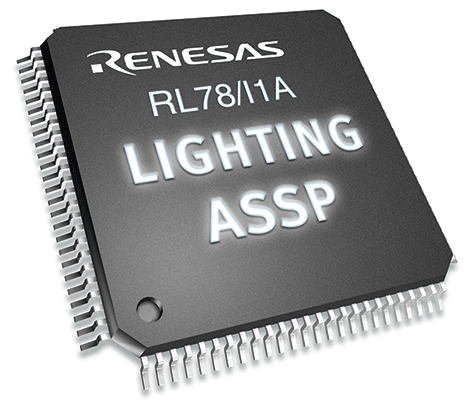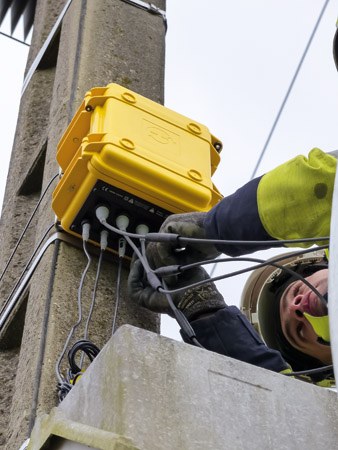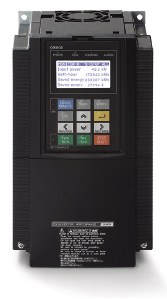The increase in energy costs and the global debate on environmental pollution – among other things – due to CO emissions2, it is making society more aware of the need to adapt energy consumption habits. One obvious way is to use fewer power-hungry devices as much as possible. In addition, government regulations around the world are enforcing energy-saving measures through the step-by-step ban on efficient light sources such as incandescent lamps, forcing the industry to invest in the development of energy-efficient light sources. Alternative energy.
The current lighting market trend is defined by LED technology, which offers significant advantages over traditional light sources. LEDs are known for their low consumption and long life. Technological advances in the last decade have continually improved the luminous efficacy (Lumen/Watt) of LEDs and the production costs are decreasing. These technical characteristics, catalyzed by the economic, ecological developments and political restrictions for the sector, are driving the spread of LEDs in the lighting industry at a great rate.
For Renesas Electronics, the lighting segment is one of the key markets with increasing focus around the world. Renesas' commitment is to offer powerful and state-of-the-art lighting products (intelligent LED drivers) for the industry, allowing to design and create lighting products capable of meeting the current economic situation and ecological demands.
Renesas offers a wide range of dedicated components and advanced semiconductors for lighting applications. The spectrum ranges from its latest family of RL78/I1A ASSPs, through to discrete LED drivers such as the R2A20134 and R2A20135, and including a wide variety of MOSFETs and optocouplers complemented by specialized lighting communications solutions. These products cover all aspects of LED lighting design, replacing incandescent bulbs and fluorescent tubes not only in commercial indoor and outdoor event lighting, but also for architectural lighting, street lighting, and domestic lighting applications. .
This article briefly describes the features of the application-specific RL78/I1A lighting family, its development tools, and the technology outlook. Discrete LED drivers R2A20134, R2A20135, and other components will not be covered further here.
RL78/I1A MCU ASSP for lighting applications
RL78/I1A is an ASSP of the latest Renesas RL78 series of microcontrollers that combines the best features of its previous industry standard microcontroller cores, the 78K0 and R8C, and offers superior performance.
This new generation of 16-bit microcontrollers has the lowest power consumption of its class in the world. It features two different ROM flash configurations, and – depending on the ambient temperature – it can optionally run at 24 or 32MHz. The MCU is available in 20, 30, 32 and 38 pins (SOIC, SSOP and QFN).
The RL78/I1A integrates all the functions and resources necessary for a typical integrated LED lighting application, therefore it is a low power, low cost, single-chip solution without penalizing efficiency.
It integrates specific functions for lighting applications such as DALI (Digital Addressable Lighting Interface), DMX512 (Digital Multiplex), RDM (Remote Device Management), ZigBee and Power Line Communications (PLC). DALI on-chip transceivers are complemented by other main standard interfaces such as UART, SPI and I2C.
On-chip intelligence and functionality reduce the need for additional external components (BOMs). The simplification of the bill of materials in turn facilitates the process of obtaining parts, system testing, the production process and increases the reliability of the entire system, are therefore strong arguments for many designs of LED applications and of ballasts where space is limited.
Figure 1: Block diagram of the RL78/I1A
The RL78/I1A offers multi-channel control of LEDs. The designer has the option of selecting 10-bit analog or 16-bit PWM to regulate each channel individually. In addition, the built-in high-precision (±1%) oscillator facilitates PWM timing at frequencies up to 64 MHz required for fine light dimming and enhancing “color temperature” settings. The use of higher frequencies in the PWM allows the use of smaller inductors (saving space) and provides more bandwidth for the constant current control necessary for proper operation of the LED.
Other RL78/I1A enable the PFC (Power Factor Correction) control function for power stage control, and the different operating modes, including CRM (Critical Driving Mode) and DCM (discontinuous driving mode). Similarly, the MCU supports market demand for features such as high CRI (color rendering index) and CCT (Correlated Color Temperature) control, as well as automatic detection and compensation of LED lumen power degradation. .
The microcontroller shows a considerable increase in its performance thanks to its elegant internal architecture where the integrated ADCs and comparators are interleaved with PWM channels and the op-amps are directly linked to the ADCs. This translates into lower CPU processing load and smaller code size, while maintaining automatic system control including LED management, PFC control, DALI communication, sensor data processing, overcurrent protection. current and “soft start”.
The built-in “soft start” circuit allows inrush current through the LEDs to be minimized, thus providing protection for the LEDs themselves and the power circuit. In addition, this function contributes to the reduction of electromagnetic emissions and also to the size of the code at the application level. Designers of LED systems would like to mimic the operation of an incandescent lamp which does not turn on and off instantly, but turns on gradually, and this is done at the hardware level.
New features, such as the Snooze mode implemented in the RL78/I1A, allow ultra-low current consumption (0.22μA) while ensuring DALI communication, A/D conversions and flash memory management, which works in second flat, while the CPU is busy with other tasks. It is important to note that no information is lost when the interrupt for DALI wakes the CPU from sleep mode.
Figure 2: Block diagram of the RL78/I1A and its typical integration as an LED driver
The internal architecture of the RL78 family of microcontrollers allows most of the functions required by the application to be executed in hardware and in highly optimized program code allowing for a minimal memory footprint. This not only keeps the cost of the system low, but also less code which allows for faster application testing and less debugging effort. Once again, this contributes positively to the overall cost optimization of the system for the designer.
This set of technical features are invaluable in the decision-making process of the correct MCU for a lighting application. Market comparisons between Renesas and the competition have revealed that the RL78/I1A is potentially capable of achieving 20% savings in BOM costs in a typical application with LED drivers.
The advantage of using microcontrollers over dedicated ICs lies in the fact that microcontrollers are flexible in use, versatile in terms of features, and last but not least, highly adaptable in terms of software. The possibility of reconfiguring the microcontrollers simply by reprogramming the application firmware allows designers to develop a hardware platform with options to adapt to local needs and for different lighting tasks. This not only saves development time and cost, but also reduces time to market. In addition, the management of system updates, maintenance tasks and monitoring is simplified.
Renesas support structure
Renesas has a worldwide customer support network spanning marketing, sales, engineering, quality, and last but not least logistics. Only in Europe, Renesas is present with its 20 offices in 14 countries. The European headquarters are located in Düsseldorf, Germany.
Sales, marketing and engineering experts at these locations offer “pre-and-post” customer support. Support goes from the application concept and benchmarking phase to the production phase.
Support for RL78/I1A lighting MCU development tools
For application design and development, Renesas offers a wide range of state-of-the-art hardware and software development tools, application notes, and on-site development tools training. Also, 3rd Parties in Europe and other continents offer development tools for Renesas products.
Development tools (hardware)
Hardware development tools range from simple evaluation boards and low-cost serial emulators (E1 Emulator) to In-Circuit real-time emulators (IECUBE).
Evaluation Boards: The RL78/I1A Family Demo Kit can be used by customers to get a “get started” with the product. The kit includes the RL78/I1A base plate with 3 LED, DALI and DMX channels, which allows the customer to evaluate the specific features of the ASSP and the specialized lighting tools included in the kit. It is a comprehensive tool that allows customers to get an initial feel for the product's features without having to go to the effort of designing their own hardware and software.
E1 emulator: The low-cost serial interface for on-chip debugging (E1 Emulator) is a powerful development and debugging tool that enables on-board programming, program execution, memory and register manipulation, etc. The E1 emulator has a simple 4-pin interface between the host and the device. Serial communication in debugging mode is accomplished via a single pin on the device. The E1 emulator supports standard software tools, such as C compiler and assembler, and has a powerful graphical user interface (GUI).
In-Circuit Emulator: The In-Circuit Emulator (IECUBE: QB-RL78I1A-TxxSP) is a powerful real-time emulator and debugging tool with real-time trace capabilities and an easy-to-use graphical user interface. The IECUBE supports both Renesas proprietary software tools and third party software tools – eg IAR Systems ® (Sweden).
All hardware tools use a standard IBM® compatible PC as a host.
Development tools (software)
As a complement to the mentioned hardware tools, there are also simulation languages and debugging software from Renesas and 3rd parties. In Europe, the IAR Embedded Workbench ® (EWRL78-FULL-EE) from IAR Systems ® is promoted.
The IAR Embedded Workbench ® , an IDE with a powerful graphical interface, supports application development. The debugging suite consists of IAR's proprietary C compiler, assembler, and C-Spy debuggers and interfaces with Renesas IECUBE and E1 emulators.
For initial device setup and evaluation purposes, Renesas also offers a free GUI-based development tool called AppliletEZ. This tool assists the user in chip configuration of necessary functions in the RL78/I1A for the lighting application without the customer needing to know the bit-level structure of the MCU registers. Externally it outputs pre-compiled C code at the click of a button. This is a boon for customers new to Renesas MCUs, especially if they are unfamiliar with them.
To further facilitate the development / debugging of lighting applications, a complete set of user tools with graphical interface for DALI and DMX communications is available in Renesas.
perspectives
Renesas is working closely with relevant industry players and consortiums to identify trends and key requirements to serve the market with cutting-edge products and technology.
In order to meet these self-established objectives, in addition to the company's own investment in research and development, it actively works with various standardization committees in Europe, defining future concepts for the lighting industry. In this way, advances in technology and specific features are also defined by the need to maintain better environmental protection – an important aspect for a sustainable global environment.
The market is being seen to be moving towards LED drivers that operate directly from the grid. The RL78/I1A with its on-chip PFC controller would have a clear advantage in terms of system cost and space for lighting ballasts above 25W. At the output, however, the higher voltage levels required will largely depend on what the designer aims to achieve with the application. Here customers will have to make a compromise between the specific goals of the application and the output specifications of the controller that is available. However, with the flexibility of available and future lighting solutions, Renesas dedicated lighting products would be able to meet most future application requirements.
One potential factor for efficiency improvement is to consider special design techniques and features of the LED drivers together with the software – in other words, provide more intelligence to the drivers. These intelligent controllers could take over the tasks of communication, sensor management, direct dimming, manage enhanced controls, etc. Renesas considers the development of this type of intelligent controller very important.
In the medium term, these smart controllers would even be essential to improve the brightness and life cycle of OLEDs. Extensive work is underway at Renesas to further improve the degree of compensation for LED/OLED light output degradation over life cycle, PWM (finer dimming) control, and more accurate color mixing for specific applications.
All of these factors are important in public and domestic lighting applications, where not only longevity, brightness, and dimming functions play a role, but also the subjective perception of comfort of light "color temperature" by people. Thus, in addition to considering cost and energy efficiency issues and LED driver design, engineers will also need to consider the target application – such as, domestic, public places or street lighting – for which the LED light source.
Renesas engineers are working tirelessly on innovative processes to optimize internal architecture, enabling and enabling lighting system designs for ballasts with greater intelligence and a higher density of functional integration. The general objective is to have electronic components for ballast lighting with better technology, cost efficiency and environmental commitment.







